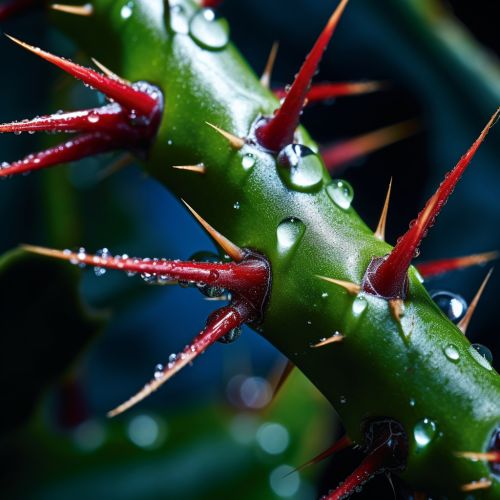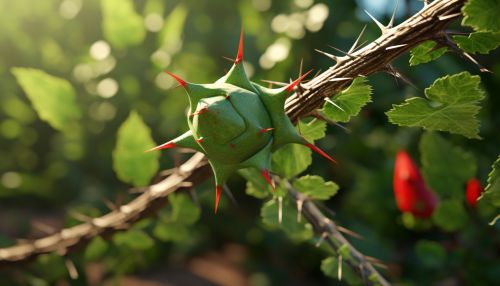Mechanisms of Plant Defense Mechanisms Against Herbivores
Introduction
Plants, unlike animals, cannot physically move to escape from herbivores. Therefore, they have evolved a variety of defense mechanisms to deter herbivores from feeding on them. These mechanisms can be broadly classified into two categories: constitutive defenses and induced defenses.


Constitutive Defenses
Constitutive defenses are always present in the plant, regardless of whether or not the plant is under attack from herbivores. These defenses include physical and chemical barriers that prevent herbivores from accessing or digesting plant tissues.
Physical Barriers
Physical barriers are the first line of defense against herbivores. These include features such as thorns, spines, and prickles, which deter herbivores by causing physical harm. Other physical defenses include a thick cuticle, trichomes (hair-like structures on the plant surface), and the production of latex or resin, which can trap and immobilize small herbivores.
Chemical Defenses
Chemical defenses involve the production of secondary metabolites that are toxic, repellent, or deterrent to herbivores. These compounds include alkaloids, terpenoids, phenolics, and cyanogenic glycosides, among others. The specific compounds produced vary widely among plant species, and can even vary within a single plant depending on the tissue type and developmental stage.
Induced Defenses
Unlike constitutive defenses, induced defenses are only activated in response to herbivore attack. These defenses can be local (restricted to the site of damage) or systemic (spread throughout the plant). Induced defenses can be physical, chemical, or involve changes in plant physiology or behavior.
Physical and Chemical Changes
Upon herbivore attack, plants can increase the production of physical and chemical defenses. For example, they may increase the production of trichomes or secondary metabolites. Some plants can also produce proteins that interfere with the digestion or metabolism of herbivores, such as protease inhibitors and lectins.
Physiological and Behavioral Changes
In addition to physical and chemical changes, plants can also respond to herbivore attack by altering their physiology or behavior. For example, some plants can increase their growth rate or change their growth pattern to compensate for tissue loss. Others can alter their nutrient allocation, reducing the nutrient content in tissues that are likely to be attacked and increasing it in tissues that are less vulnerable.
Co-evolution of Plants and Herbivores
The interaction between plants and herbivores is a classic example of co-evolution, where the evolution of one species (in this case, the plant) drives the evolution of another species (the herbivore), and vice versa. Over time, this can lead to an "arms race" where plants evolve increasingly sophisticated defenses, and herbivores evolve increasingly sophisticated counter-defenses.
Conclusion
In conclusion, plants have evolved a wide range of defense mechanisms to deter herbivores. These defenses can be constitutive or induced, and involve physical barriers, chemical defenses, and changes in plant physiology or behavior. The interaction between plants and herbivores is a complex and dynamic process, shaped by the ongoing co-evolutionary "arms race" between these two groups.
